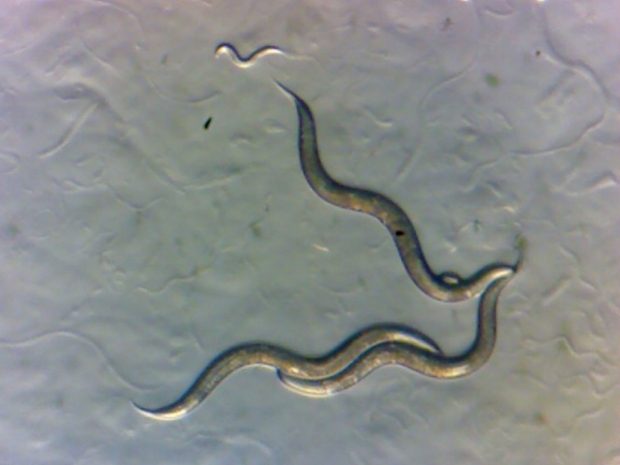
Worms Near Chornobyl Develop “Superpower”

Over three decades since the catastrophic nuclear disaster at Chornobyl, scientists have been uncovering startling signs of life in the exclusion zone, a region once deemed uninhabitable due to extreme levels of radiation. One of the most intriguing discoveries involves a species of nematode, Oscheius tipulae, that has seemingly developed a “superpower” — immunity to radiation. This remarkable adaptation offers fascinating insights into the resilience of life, as well as potential future applications in science and medicine.
A New Ecosystem in the Aftermath of Disaster
The explosion at the Chernobyl Nuclear Power Plant in 1986 released a massive amount of radioactive material into the environment, contaminating vast areas of Ukraine, Belarus, and surrounding regions. As radiation levels spiked, it led to the displacement of thousands of people and the declaration of a 30-kilometer exclusion zone, which has been largely deserted since the disaster.
While humans and many large mammals were forced to evacuate, nature began to slowly reclaim the abandoned land. Over time, scientists started noticing that certain species were not just surviving, but thriving in the radiation-filled environment. In particular, nematodes like Oscheius tipulae began to draw attention due to their extraordinary ability to adapt to these harsh conditions.
Radiation: A Deadly Force of Mutation
Radiation is a known mutagen, capable of causing DNA damage, leading to mutations that can result in cancers, genetic disorders, or cell death. For most organisms, exposure to high levels of ionizing radiation, like that in Chernobyl, is deadly. Radiation damages cells by breaking DNA strands, impairing cellular repair mechanisms, and triggering oxidative stress. However, the discovery of Oscheius tipulae near Chernobyl, which has managed to withstand these dangers, has baffled scientists.
Researchers have long known that nematodes are hardy organisms, often used as model organisms in genetic and biological research. Yet, the ability of these worms to thrive in an environment laced with deadly radiation suggests something more profound: an evolutionary adaptation that enables them to survive, and perhaps even harness, the radiation for their benefit.
Unraveling the Mystery: The Genetic Key to Radiation Resistance
Recent studies have explored how Oscheius tipulae in Chernobyl have adapted to the radioactive environment. Scientists found that the worms in the exclusion zone show significantly lower levels of DNA damage compared to their counterparts in non-radiated environments. The key to their survival appears to lie in their enhanced ability to repair DNA.
Worms living in the Chernobyl exclusion zone exhibit higher activity in genes associated with DNA repair pathways. These genes are responsible for detecting damaged DNA, cutting out the broken parts, and rebuilding it with accurate sequences. This heightened repair mechanism enables the worms to fix radiation-induced mutations before they can cause harm, effectively providing a shield against radiation.
In addition, the Chernobyl Oscheius tipulae seem to have developed a robust antioxidant system that helps them neutralize reactive oxygen species (ROS) — toxic byproducts of radiation exposure that can cause cellular damage. This system reduces oxidative stress, which is one of the main ways radiation wreaks havoc on living tissues.
The Role of Epigenetics in Adaptation
One of the more intriguing aspects of this adaptation is the potential role of epigenetics — changes in gene expression that do not involve alterations in the DNA sequence itself. The worms may have undergone epigenetic modifications in response to the radiation exposure, allowing them to “switch on” protective genes that improve DNA repair and stress resistance.
Epigenetic changes can occur rapidly in response to environmental stresses, and it’s possible that over generations, these worms have passed on their radiation-resistant traits to their offspring. This form of rapid adaptation challenges the traditional view of evolution as a slow, gradual process and suggests that organisms might be able to adjust to extreme environments far more quickly than previously thought.
Implications for Human Health and Space Exploration
The ability of these worms to adapt to radiation has significant implications for human health, especially in fields like cancer research and radiobiology. Understanding the genetic and epigenetic mechanisms that confer radiation resistance could lead to new ways to protect humans from radiation exposure, whether in medical treatments like radiotherapy or in space travel, where astronauts are exposed to higher levels of cosmic radiation.
As space agencies like NASA plan missions to Mars and beyond, the lessons learned from these resilient worms could inform the development of technologies to shield astronauts from the harmful effects of space radiation.
A Glimpse into Nature’s Resilience
The story of Oscheius tipulae and its radiation-immune capabilities is a powerful reminder of nature’s ability to adapt and evolve in the face of seemingly insurmountable challenges. While the Chernobyl exclusion zone remains a symbol of human tragedy and environmental devastation, it is also a testament to the resilience of life. These worms, with their newfound “superpower,” offer a glimpse into the future of survival on a planet where environmental extremes are becoming more common.
As research into these incredible creatures continues, we may discover even more surprising ways that life on Earth — from the smallest organisms to the largest — is capable of adapting to the world’s most dangerous environments.

